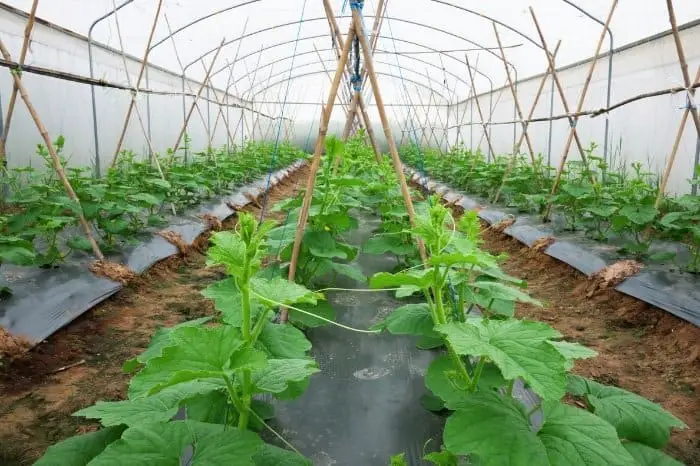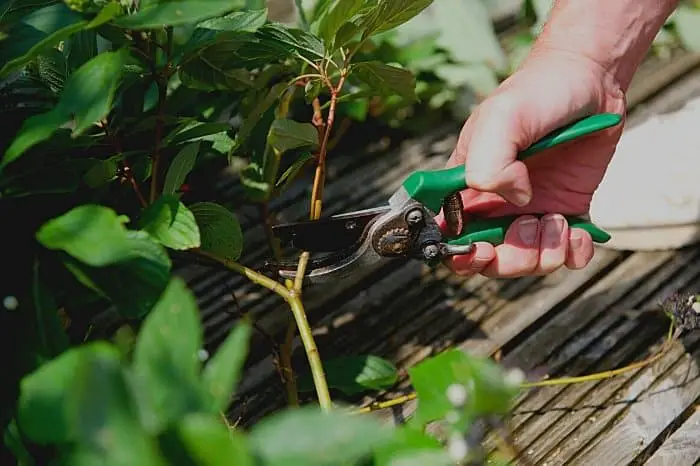Last Updated on October 29, 2022
Cultivation in an indoor space is becoming most growers’ favorite as it offers lots of advantages. To commence grow room indoor garden, there are some supplies required to set up each grows room stage. This is why we have created a grow room equipment checklist for the success of your indoor farming.
It is pretty easy to set up your indoor grow room with the right knowledge. The demand for indoor grow rooms continue to rise and so is the demand for grow room supplies. So, read on to discover which grow room supplies you need when it comes to choosing a complete grow room equipment checklist.
Indoor Grow Room Supplies Checklist
So, let’s look at the equipment you will require to starting your indoor farm.
1. Grow Space Or Room
The first thing on your checklist is growing space. Ensure you have an area where you can conveniently cultivate your crops and allow them to spread as they grow. You can make use of a grow tent or simply build a grow room or convert any space in your house into a grow room.
Also, make sure you put things in place for other equipment to fit in. Things such as drilling holes to hang your grow lights and also integrate ventilation in your grow room. Reflective materials should also be integrated into the walls unless you’re making use of a grow tent.

2. Grow Lights
Whichever type of grow light you wish to use (such as LED, HID, CMH, T5, etc), grow light is one important supply for the success of your garden. Ensure you use quality grow lights that will the most efficient work on your plants.
3. Air Circulation
Air circulation needs to be incorporated in your grow room. Normally, grow tents should have two holes: one for fresh air inlet and the other for air out for stale air.
There should be continuous replenishment of air i.e. fresh air must circulate from time to time. Avoid stale air as this can diminish the growth of your plants. Air circulation will also help in temperature controls. You can as well mount an oscillating fan for adequate airflow.
4. Seed Starter For Seed Sowing
I’m sure you are aware that a successful way of starting cultivation is by germinating seeds and transplanting them into a bigger growing medium when it has sprouted. You can start from the soil but most growers prefer to use seed starter plugs or grow cubes.
5. Grow Media & Container
Choose the appropriate grow media for your cultivation and accompany it with a growing container. Generally, there are two types of growing containers designed for two purposes: seedlings and bigger plants. The growing container has permeable walls for water passage and also to allow the soil to breathe.
JERIA 12-Pack 3 Gallon, Vegetable/Flower/Plant Grow Bags, Aeration Fabric Pots with Handles
6. Nutrients Solution
You can obtain nutrients solutions designed for indoor growing needs and ensure they are in the right proportion. We recommend you start with using half or 70% portion of the suggested portion of use.
7. PH Meter & PPM (Measuring Supplies)
It is crucial you monitor the pH of your nutrient solution. Nutrients are taken up by plants at different pH range. Generally, the ideal pH for the soilless system is 5.5 to 6.5. Ensure you also have some pH up and pH down handy in case there’s a fluctuation in the recommended pH range.
PPM will measure the concentration of minerals in your nutrient solution so you don’t overfeed or underfeed your plants. Nutrient overfeeding can cause nutrient burn and we want to avoid such.
8. Timer
All your system does not have to run at all times as some will need rest. For example, grow light should not be on 24 hours because plants require light and dark phases. When grow lights are off, your plants get to rest.
This is why you need a timer to always keep them in check because it’s not every time you will be available to always turn off or on the switch.
9. Pruners & Harvesting
Trim your plants with clean and sharp tools at the right time. You can also harvest and prune at the same time.

10. Cost Of Electricity
The cost of electricity is another thing you should consider putting your checklist. The electricity cost mainly depends on the wattage of your grow lights and how long you leave your equipment running. High output fans and other running equipment also add to the cost of electricity.
Generally, take note of the entire plugged-in device to determine the total cost of electricity.
FAQ’s
What equipment is needed for indoor grow?
There are a few things you need to take into consideration.
1. Air quality This is the biggest thing for your indoor grow. You want to make sure that you have good air circulation and don't have any stagnant areas.
2. Lighting You should have at least two lighting setups, one for vegetative growth and one for flowering.
3. Temperature You need to make sure that you keep your temperature around 70 degrees Fahrenheit. If you don't, then you will have a lot of issues with mold.
4. Humidity You want to make sure that your humidity is around 50% and that it's not too high or too low.
5. Watering You should be able to water your plants every other day, but you don't want to overwater because then you will end up having issues with algae.
6. Hydroponics If you are growing hydroponically, you need to make sure that you have a good nutrient solution and also a good ventilation system.
7. Fertilizers You need to make sure that you use the correct fertilizer. There are some that can be used for indoor grows as well as others that are better for outdoor grows.
8. CO2 If you are growing indoors, you will need to make sure that you have good air circulation.
What do I all need for a grow tent?
The following equipment will be required for a successful grow:
1. A greenhouse or other enclosure.
2. A ventilation system.
3. A power supply and inverter (to charge batteries).
4. A water source.
5. An air circulation system.
6. A light source.
7. Some type of soil.
8. Seeds.
9. Watering equipment.
10. A grow room.
How do you put a ventilation in a grow room?
I would suggest you consider a larger exhaust fan. That will keep the room from becoming too hot and humid. You may want to consider installing a fan that can be turned off and on.
Do you need fresh air in a sealed grow room?
The answer is YES! I use an aquarium pump to bring air into my grow room, and I have two window fans that pull fresh air in through the windows. The window fans work great.
What's the best temperature for a grow room?
There are some things to consider before you set your ideal temperature though. If you choose to go with a traditional air conditioner for your grow room, you should know that most air conditioners are designed to cool a space down to 78 degrees Fahrenheit.
That may seem like a great temperature for a house, but it is not ideal for plants. You want your grow space to be around 80 degrees to 90 degrees, depending on how much light the grow space receives. If you do have the option of choosing a more efficient HVAC system, you should definitely choose one that is designed to run at a lower temperature. For instance, if you can get a heat pump that will run at 70 degrees F and a fan that can cool the room to 60 degrees, that will work great.
Growroom Supplies Final Say
So, that’s it on grow room equipment checklist. By now you should know what to look for and how to start your indoor growing farm. Happy growing!

Eunice is an enthusiastic gardener with a passion for growing beautiful flowers. She loves nothing more than spending time in her garden, tending to her plants and enjoying the outdoors. Eunice has been gardening for over 15 years and has developed a unique style of landscaping that is both practical and aesthetically pleasing. She is especially fond of growing roses and enjoys experimenting with different varieties and colors. Eunice takes great pride in her garden and often shares the fruits of her labor with friends and family. In her spare time, she enjoys reading gardening magazines and attending local horticulture events. Eunice is passionate about her hobby and is always eager to share her knowledge and experience with others.

